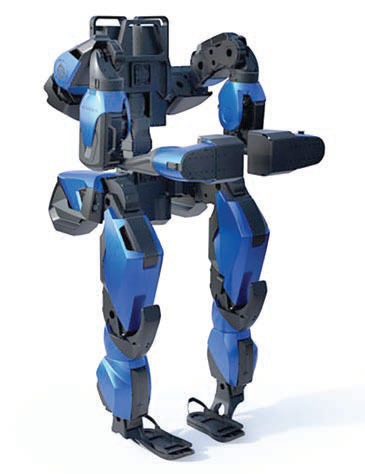By John Rogers
A year ago, Salt Lake City-based Sarcos Robotics told tech website IEEE Spectrum that it would be ready to ship its powered exoskeleton — that it claims would be the future of industrial labor — by the end of 2019. It seems that the company that has been for decades developing the robotic technology to make it possible is ready to deliver on that promise.{mprestriction ids="1,3"}
Sarcos announced early in December that the first Guardian XO Alpha full-body, powered industrial exoskeleton units will ship to members of Sarcos’ Industrial Exoskeleton Technical Advisory Group (X-TAG) and the U.S. military beginning in January.
The Guardian XO is the world’s first battery-powered wearable robot which can safely lift up to 200 pounds for extended work sessions. Designed to augment rather than replace humans, the Guardian XO combines human intelligence, instinct and judgment with the strength, endurance and precision of machines to address skilled labor shortages and occupational safety issues across many industries.
“Safe, intuitive and simple to use, the Guardian XO empowers teams to safely do more, enabling more people, whether young or old, big or small, to accomplish physically demanding tasks without stress or strain on their bodies,” Sarcos said as it announced its intent to begin shipping the units.
Commercial production units of the Guardian XO will begin shipping to customers later in 2020, the company said. The Guardian XO has been under development for 20 years, with the initial vision and funding for the effort coming from the Defense Advanced Research Projects Agency (DARPA) and additional funding over the years coming from the U.S. Department of Defense, leading Fortune 500 industrial companies, such as Caterpillar, GE Ventures, Microsoft and Schlumberger, as well as private investors.
“The Guardian XO is a great example of what can happen when private industry and government join forces with a small, innovative team to address a common challenge,” said Ben Wolff, chairman and CEO, Sarcos Robotics.
Sarcos’ X-TAG, which was assembled beginning in 2016 and announced in 2018, is comprised of leading companies across a variety of industries, including industrial manufacturing, oil and gas, utilities, logistics, construction, automotive, aviation and aerospace. The X-TAG members have played an integral role in assisting with the functional design, as well as performance and safety requirements, to ensure that the Guardian XO meets the needs of myriad use cases across various industries, the company said.
“Full-body, powered exoskeletons have significant potential to transform the industrial workforce as we know it,” said Remy Glaisner, research director for intelligent operational systems and robotics at Sarcos. “From improving worker strength, efficiency and safety to reducing occupational injuries caused by repetitive heavy lifting, the Guardian XO is poised to be a game-changer for a wide variety of industries.”
“The Guardian XO Alpha units are the culmination of 20 years of effort by our team and represent a huge step forward as we prepare to ship our first commercial Guardian XO wearable robots to our customers in the latter part of 2020,” said Wolff. “Delivery of our Alpha units represents the first time in history that industrial and military customers will gain access to a full-body, powered exoskeleton that can safely enable humans to intuitively lift and dexterously manipulate objects weighing up to 200 pounds and walk at human speed for extended work sessions. With the growing shortage of skilled labor across industries and the rising social and economic costs associated with occupational musculoskeletal injuries, we have an enormous opportunity to benefit employees and companies alike.”
Sarcos is now accepting orders for the Guardian XO for delivery late next year.
The Sarcos Guardian XO is a 24-degrees-of-freedom, full-body robotic exoskeleton. While wearing it, a human can lift 200 pounds while feeling like he is lifting just 10 pounds. The Guardian XO is fully electrical and untethered with a runtime of two hours and battery packs can keep it going for a full work day. It takes seconds to put on and take off and Sarcos said new users can be trained to use the system in minutes. One Guardian XO costs $100,000 per year to rent, Sarcos said. {/mprestriction}








